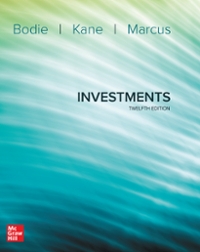Question
Suppose it is January 1, 2016, and you are planning for your retirement. In particular, you own $10,000 (face value) of coupon Treasury bonds. While
Suppose it is January 1, 2016, and you are planning for your retirement. In particular, you own $10,000 (face value) of coupon Treasury bonds. While the bonds mature on January 1, 2036, you intend to sell them next year, on January 1, 2017.
a. What is the main (downside) risk associated with the sale of these bonds? To put it differently, in the absence of a hedge would you want the spot price of these bonds to be high or low on January 1, 2017?
b. Explain how, on January 1, 2016, you could hedge against the risk described in part (a) with a forward contract. In particular, would you contract to buy or sell Treasury bonds?
c. Explain how, on January 1, 2016, you could hedge against the risk described in part (a) with an option instead. In particular, would you acquire a put or a call option on Treasury Bonds?
d. Suppose that on January 1, 2017, the spot price for your Treasury bonds is $9,500, while the price specified on your forward contract is $10,500. From a hindsight perspective, would you have benefited, lost, or broken even from having entered the forward contract? By how much?
e. Now suppose that on January 1, 2017, the spot price for your Treasury bonds is $10,500, while the strike price specified on your option is $9,500. Ignoring the option premium, would you benefit, lose, or break even from having purchased the option? By how much?
f. Now suppose that on January 1, 2016, you buy the bonds that you will sell on January 1, 2017. What maturity of bonds would minimize your interest rate risk?
Step by Step Solution
There are 3 Steps involved in it
Step: 1

Get Instant Access to Expert-Tailored Solutions
See step-by-step solutions with expert insights and AI powered tools for academic success
Step: 2

Step: 3

Ace Your Homework with AI
Get the answers you need in no time with our AI-driven, step-by-step assistance
Get Started


